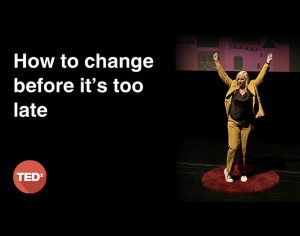During the early months of my career at Facebook, I found out from my manager that I was irritating without realising it. Yishan, my manager at the time, typed up all the feedback – the good, the bad and ugly – and printed it out. He told me to go through it in detail, extract the major themes and write a short essay on each one.
Whilst initially a hard pill to swallow, I knew that, left unimproved, this would have thwarted my ability to contribute at Facebook. So the two of us met regularly, during which Yishan “held space” for me, asked probing questions and guided me toward specific goals. Six months later, he asked the same colleagues what they thought of working with me and many said they felt like they were working with a completely different person. They liked this person better.
A recent study found that leadership coaching delivers an ROI of 5.7 times the cost – clearly an important aspect of developing your teams and setting them up for success. Coaching can be defined as “a development process whereby an individual meets on a regular basis to clarify goals, deal with potential stumbling blocks, and improve their performance.” This takes patience and empathy. Always remember that your teammates are people, not computers whose software you’re upgrading. But it’s worth it. Not only will your team be more capable and better retained but you’ll grow too as teaching is one of the most effective ways to learn.
My coaching experience marked a major turning point in my life, fundamentally changing the way I relate to others and even myself. And it’s just one example of how effective coaching can have a profound impact on not only the lives of your teammates but on your entire company. Following my experience at Facebook, and now my role as co-creator of Asana, I’ve shared my top tips for effective coaching below.
Problem-solving: teaching your team to fish
At Asana, we think of our organisation like a tree, with the CEO on the bottom. The individual contributors are the fruit—the people doing the work—and managers are their supportive branches. Coaching is a key tool for ensuring your teammates fully ripen. When a teammate comes to their manager with a problem that needs solving, many leaders’ first instinct is to give them advice on what to do. If you’re good at something that someone else is struggling with, it’s only natural to say, “Here’s what I would do. But that’s at best a short-term solution.
Instead, you want to “teach them how to fish.” To adapt the famous saying, “Give your team a solution, and you empower them for today; teach your team how to solve problems and you empower them for a lifetime.” Start with active listening: when your teammate brings up the problem they need to solve, reflect back on what they’re saying (“What I hear you saying is…”). Sometimes just hearing a problem relayed back inspires someone to realise they already know the answer.
Next, ask probing open-ended questions that can help them come to the answer themselves. Walk them through the thought process you would use. Tell them about your own experiences and how you’ve seen similar situations go down. Give a specific solution to the problem only as a last resort – asking open ended questions can help people consider varying viewpoints and come to their own conclusion.
Goal-setting: big hairy audacious goals
Anyone on a career track should have concrete long-term goals. As a coach, it’s your job to help them identify those goals and then set them on a realistic path toward achieving them, with a timeline of concrete milestones along the way.
Many people need help figuring out possible goals, especially when they’re early in their careers – they may not know what their career options are. Throughout the course of these conversations, try to unearth their real goals, not just their stated ones. Many people will say that they want to become managers, when their real goal is to have more influence and recognition. You can help them identify other paths to achieving that goal.
Once goals have been identified, it’s your job to help set realistic expectations about how long it will take to achieve them. Create intermediate milestones and a plan for tracking progress towards them. Emphasise the value of the journey, rather than being focused on the particular outcome. Ultimately, they should develop their own framing and phrasing of the goal, but you should provide a lot of feedback and input.
Performance improvement: tough conversations
An inevitable part of any leader’s role is to give constructive feedback to a teammate when something isn’t going the way it should be. These can go poorly if done without mindfulness, If done well, they can be a huge source of growth and gratitude. In these conversations, it’s important for them to know you’re on their side. Be empathetic and maintain eye contact in order to maintain a consistent and trustworthy presence. Disclosing your own weaknesses (“I totally get it; I’ve been there”) can help create a space of trust.
Speak objectively about what you’ve observed and about your own experience. Explain why this matters to you, how you think the issue is impacting their effectiveness or the success of the team. Listen deeply to their perspective on it and be genuinely open to having your mind changed. Help them come to actionable steps about how they can change. Create homework. Then, check in on next steps, more homework and your sense of progress at every 1:1 until you mutually agree the issue feels resolved. Once it is, celebrate.
Coaching is a competitive advantage
In Atul Gawande’s TED talk on the importance of coaching, he recounts the origin of coaching in sports: “In 1875, Harvard and Yale played one of the very first American-rules football games. Yale hired a head coach; Harvard did not. The results? Over the next three decades, Harvard won just four times. Harvard hired a coach.”
The bottom line: as leader of a team, you want your team to succeed in accomplishing its mission. You’ve likely put in a lot of effort to find and recruit the talented people you’re working with. It’s worth it to continue investing in them, to help them be as great as they can be, both for the sake of your project, and for the sake of their natural desire to become great at what they do. Coaching is a highly leveraged way to up your team’s game, making you better and better at doing great things together. ![]()
Share via:


















































